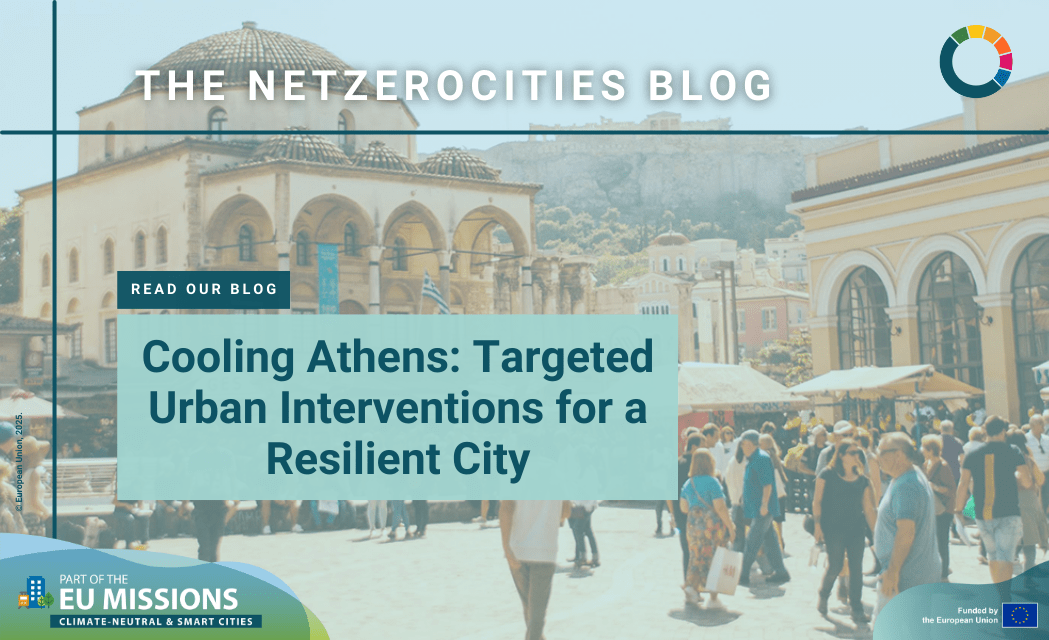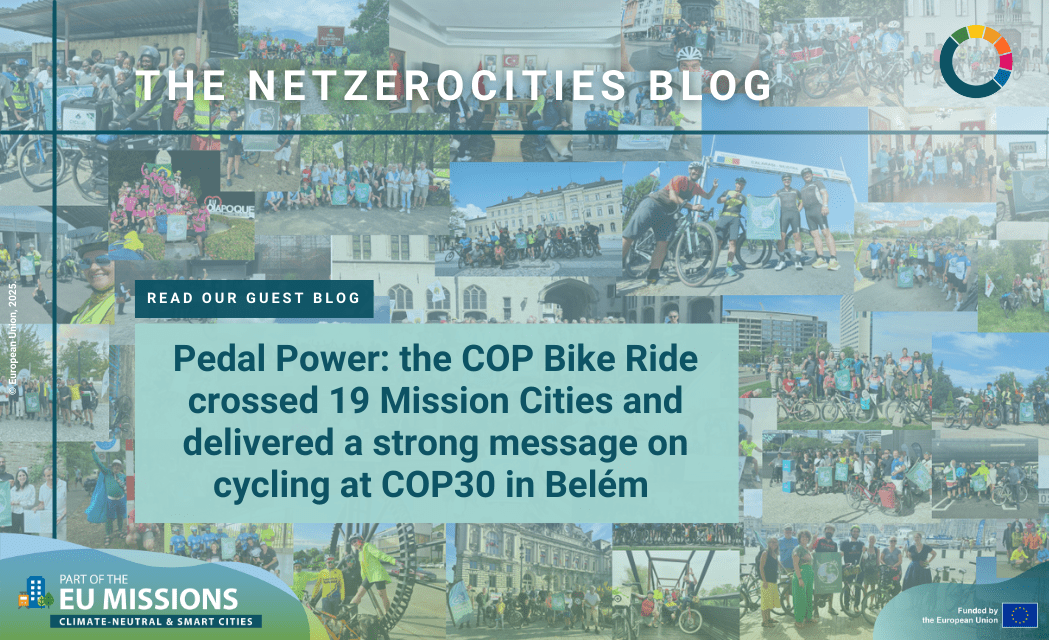This blog post comes from the original.
By Vangelis Marinakis, Assistant Professor of the National Technical University of Athens
Athens is on the frontline of climate change. With summer temperatures frequently soaring to dangerous levels, prolonged heatwaves and nights offering little relief, the city is experiencing first-hand the harsh realities of urban heat stress. Concrete surfaces trap heat, amplifying discomfort and health risks for residents. In this context, urban cooling is not a luxury; it is a matter of public health, quality of life and resilience.
A City in Transition
Over the past 18 months, the City of Athens has launched a dynamic programme of small- and medium-scale interventions, aimed at improving microclimatic conditions and building resilience to extreme heat. Among the measures already implemented are:
- 7,500 new trees planted across the city
- The creation of the first urban microforest in Ano Kypseli
- Redevelopment of squares with “cool” materials
- New green spaces featuring misting systems and permeable surfaces
These actions are designed not only to mitigate the urban heat island effect but also to reclaim public space for citizens, offering shade, comfort and improved wellbeing.
Mapping Heat Risk
The Athens Heat Risk digital map identifies areas of highest thermal stress, supporting both planning and citizen awareness.
Drawing on data from the National Observatory of Athens, the tool provides near real-time (15-minute interval) maps of air temperature and heat discomfort indices.
Moreover, a composite Heat Risk Index (HRI), based on maximum summer temperatures, population density, and tree cover, highlights the areas most exposed to heat stress.
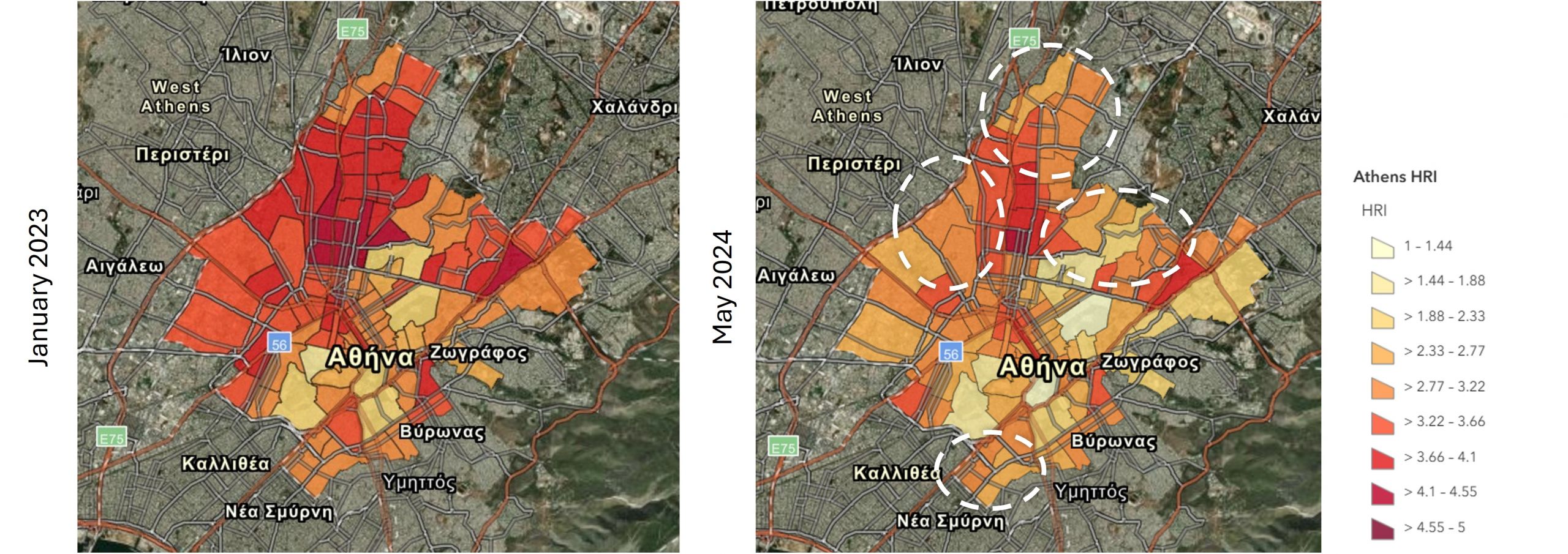
'Heat Risk Index', January 2023 vs May 2024
Early results are promising: newly planted trees and shading structures are already shifting high-risk zones (HRI > 4) into lower categories, particularly in densely populated districts with little greenery.
This work is part of the city’s broader innovation efforts within the ASCEND (supported by the EU Cities Mission and Mission Platform, NetZeroCities) and Athens Energy Portal (supported by ICLEI Action Fund) projects, which aim to advance integrated solutions for climate neutrality, resilience and citizen engagement.
Evidence from the Field
Beyond digital models, field teams used thermal cameras and sensors to measure on-the-ground impact in key project sites. Results show measurable cooling:
- Serafeio: A new “cooling garden” with pergolas, natural materials, and misting recorded surface temperatures of around 30 °C in shaded areas, compared to over 50 °C on adjacent pavements. During the July 2025 heatwave, perceived temperatures were 4 °C lower than in the surrounding environment.
- Agia Irini Square: The use of reflective materials and targeted shading reduced surface temperatures by 4-6 °C.
- Argentinis Dimokratias Square: Newly planted trees brought shaded ground temperatures down to about 30 °C, while unshaded pavements and metal surfaces reached nearly 60 °C.
- Ano Kypseli Microforest: A former parking lot transformed into a dense microforest now registers surface temperatures of 37-40 °C; a dramatic improvement compared to the 60 °C recorded when it was a parking area.
These findings demonstrate that cooling the city is not only possible – it is measurable.
By combining targeted municipal investments with citizen engagement, the city is showing that even modest, localised actions can make a tangible difference in protecting health, improving quality of life, and building resilience to extreme heat.
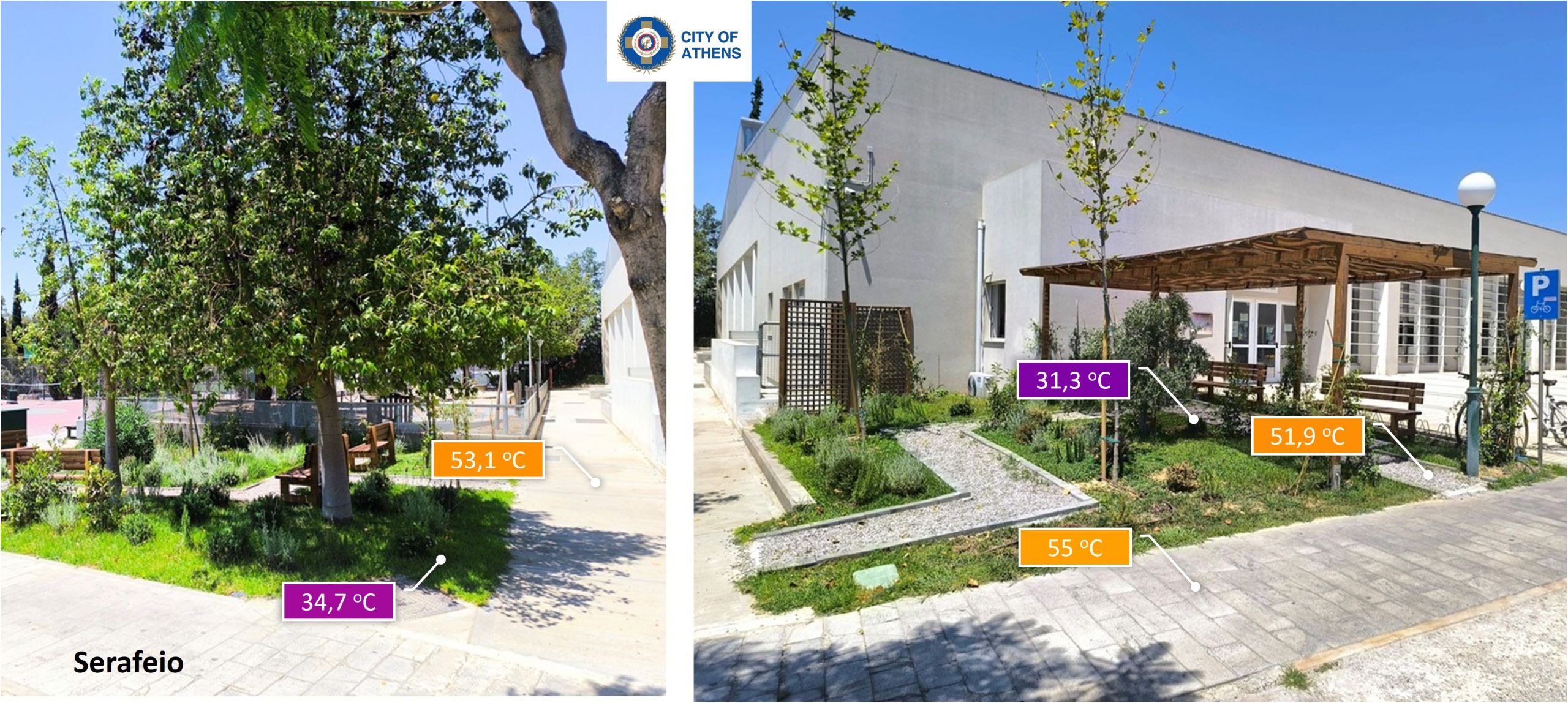
Serafio Cultural Center
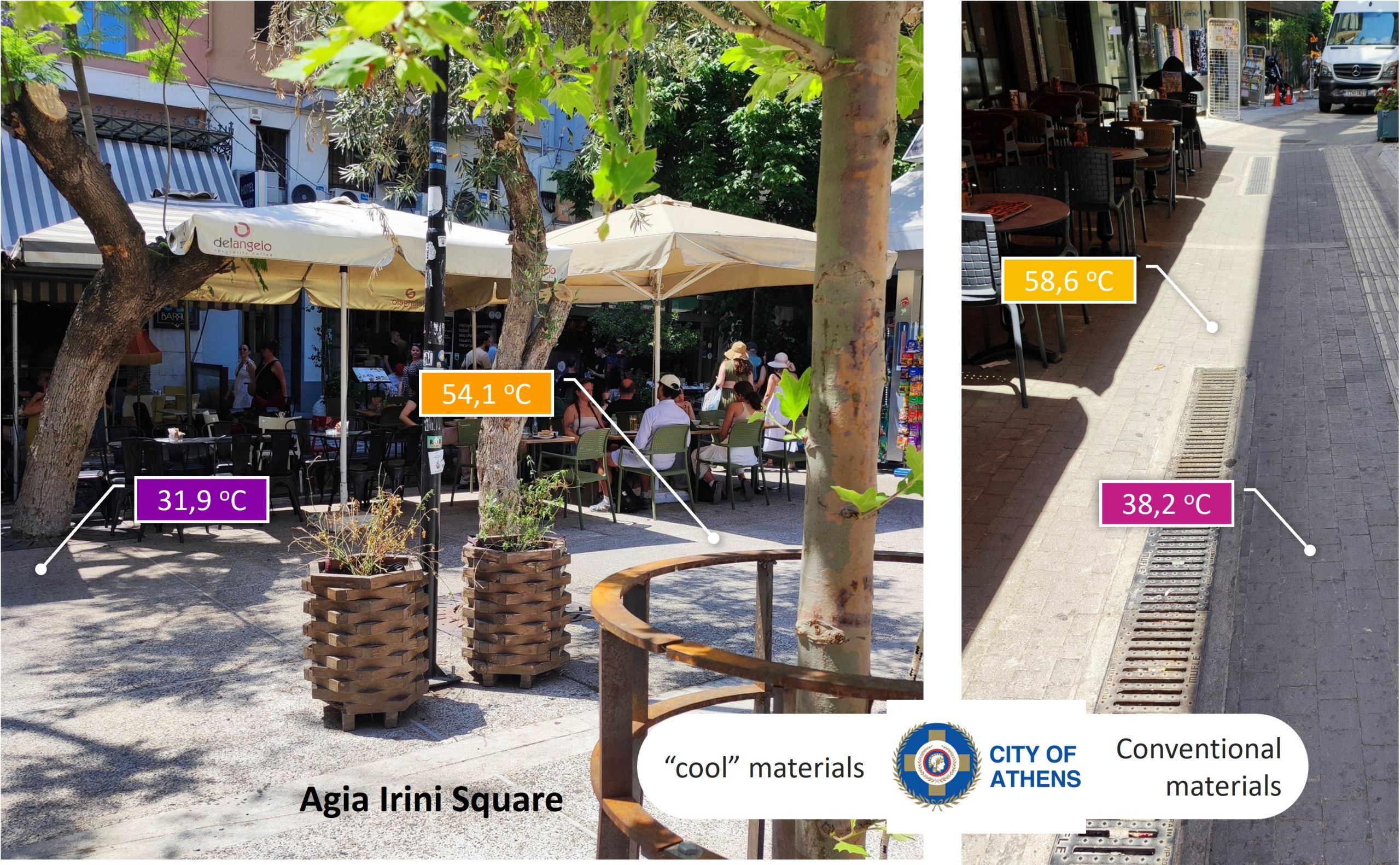
Agia Irini Square
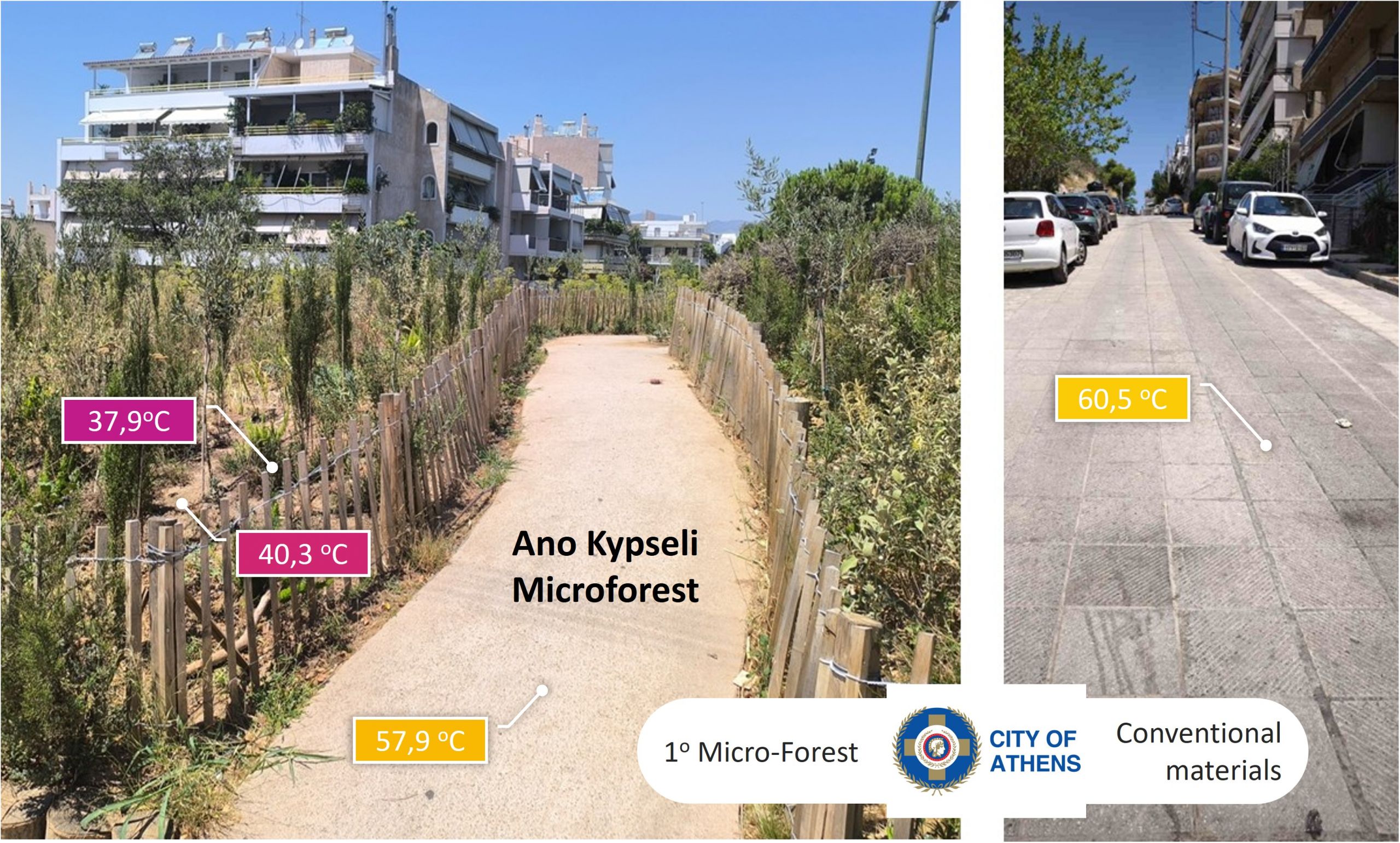
Ano Kypseli Microforest

